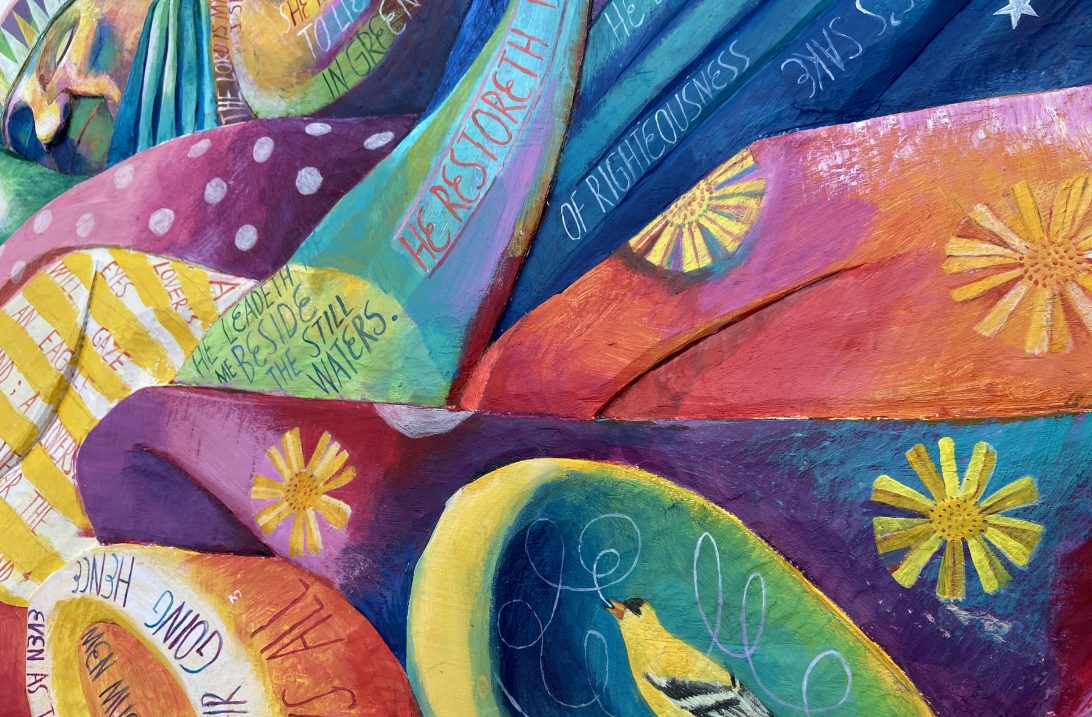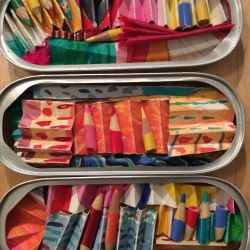I have been working like a maniac and eating sardines like there’s no tomorrow. WHY?

The following is my artist’s statement:
I know the following things laid side by side are responsible for this fleet of boats/altars/windows.
A young man casually pulls out his folding fan on a stifling train ride between Rome and Naples.

Obviously I was traveling recently. And when traveling, one tends to use whatever material is at hand for art-making and I guess I ate more than my share of canned fish. The tins make wonderful frames and with their allusions to things silvery and densely packed, they have since become natural containers for my art. These boats are packages of valuable stuff saved, compressed; precious and endangered things folded in on themselves and packed like sardines. They allude to survival by migration, physical and spiritual journeys, they can be seen as symbols of the Church, they are scoopfuls of water baled out of a larger boat, they are bottled messages thrown out to sea. They are short prayers, poetic as packed suitcases. They are reliquaries. In a sense they are the result of an artist residency I took part in on that same trip near Naples Italy. When I returned home, I folded the drawings I did during that month into tiny accordions until they fit into sardine cans. Beside them are folded watercolour paintings and linoleum prints, remnants of recipes. The glass boat shape goes on last and encapsulates these strange bedfellows.
It is my pleasure to share this show at the David Kaye Gallery with my good friend, neighbour and extraordinary ceramic artist, Ann Cummings:
ANN CUMMINGS: “This body of new work was inspired by my admiration of an 18th century Derby porcelain that I saw at the Gardiner Museum, Toronto and then subsequently many more pieces at the Victoria & Albert Museum, London, England. The Derby works, to my mind, are delightfully charming and rather frivolous. I felt a kinship with those works and they proved to be a vehicle for the direction that I was compelled to follow.
My works are imagined landscapes. They represent both my joy and delight in nature and also my sorrow, grief and fear for the ongoing destruction of our environment. These are assemblages of chaos and a warning to take care of the land. My sculptural works are also an homage to my dearly departed husband and ultimately to the landscape that we found together where we loved and lived.
I feel there is a strange beauty all around me and yet conversely there is uncertainty and a disarray of the natural landscape with the possibility of its demise. This dichotomy of nature and my surrounding landscape are two opposing sides of beauty and wonder, as well as fear and destruction, that all makes for strange bedfellows.”













